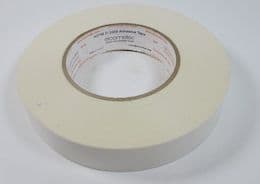
Curated with aloha by
Ted Mooney, P.E. RET

The authoritative public forum
for Metal Finishing 1989-2025

-----
Dry Adhesion Tape Test without cutting into the painted surface
Q. I have been asked to link our internal "Dry Adhesion Tape Test" with a controlling specification. We are using the required 3M tapes and rubber rollers, but we do not cut into the painted surface. Does anybody know which ASTM describes a Dry Adhesion Tape Test without cutting into the painted surface? ASTM D3359 describes tests that require multiple cuts into the painted surface.
Bob SheppardFinishing shop employee - Stanton, California
October 6, 2009
|
|
A. I do not know the Industry Standard but, I do know the Boeing Spec. BSS7225. BSS7225 describes how to perform Dry Adhesion and Wet Adhesion tests. Doug Horton- Los Angeles, California A. The only test for adhesion that you do not have to destroy the coating prior to the test is ASTM D4541. Unfortunately, a failure to pass will result in the coating being destroyed. Whether this test is appropriate for your requirements is questionable, nevertheless it may provoke some comments that may help you. Terry HicklingBirmingham, United Kingdom |
A. Nobody will do this test on good product and destroy the finish by cross cutting into the substrate. Paint a sample panel along with the product that is of the exact same material and process; crosshatching of the test panel should give you a reliable result.

Sheldon Taylor
supply chain electronics
Wake Forest, North Carolina
October 9, 2009
A. Hi,
I think Sheldon brings up a good point.
Most tests are performed on a standard coupon or substrate to comply with the standard or ensure conformity/consistency.
It just depends on your objective. If you are trying to evaluate conformance to a standard or evaluate a supplier, the coupon is the way to go.
If you are simply trying to see how the finish will perform on your specific product, perform the test on the product. Just make sure you have solid accept/reject criteria in place before you begin.
- Niles, Illinois
December 15, 2009
Q, A, or Comment on THIS thread -or- Start a NEW Thread
